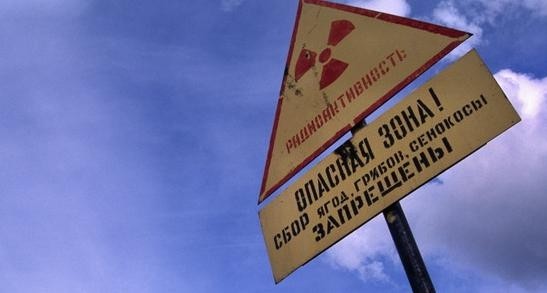
Radioactive waste facility shut down after West paid €5 million for upgrade
ADVERTISEMENT
After finally being renovated; Russia has emptied it. The last truck loaded with solid radioactive waste left the Radon facility west of Murmansk in September, Bellona Murmansk informs.
Some 200 cubic meters of solid waste and another 150 cubic meters of liquid radioactive waste are removed. About 30 transports have gone from Radon to another civilian storage site for radioactive waste; in Sosnovy Bor outside St. Petersburg.
Back in the early 90ies, when the road between the Norwegian border town of Kirkenes and Murmansk was opened for foreigners to drive, the Radon storage started to make headlines in international media. The storage was rundown, lacked proper fences and alarm systems.
In 1994, Russia’s state nuclear watchdog, the Rozatomnadzor, decided to prohibit further use of the site that stored radioactive waste from the “Lenin” nuclear icebreaker, radiation sources from X-ray machines, and other radioactive waste from hospitals and industry in the Murmansk- and Arkhangelsk Oblasts.
A decade later, Norway initiated talks with Sweden and the European Union to rise funding for a tender to secure the site from leakages and thefts. A report published by the Norwegian Ministry of Foreign Afairs in 2003 reads that the aim of the fundraising was to start cooperation with Russia to take care of the radioactive waste stored at Radon, repack it properly and place it in a new intermediate storage to be built at the site. Then, more waste could be received.
In 2004, the European Commission granted €1 million to establish and manage a site coordination unit to specify the needs required.
The Commission’s TACIS program (Technical Assistance to the Commonwealth of Independent States) coordinated the job. A job that soon ran into a long brickwall of problems. Closing the project two years later, the TACIS summary report blames disagreement between EC and Rosstroy, structural changes, discovery of radiation hot spots and organizational inefficiencies and inconsistencies.
ADVERTISEMENT
However, despite initial problems Norway and Sweden teamed up with the European Commission and agreed in 2007 to co-fund a €4 million project awarded to the British Company Crown Agents to rebuild the entire Radon facility, RIA Novosti reported.
Soon after the new facility was commissioned, Russia started to remove the waste. Then, Western donors have spent around €5million on the project.
Nuclear and radiation expert Andrey Zolotkov with Bellona Murmansk welcomes the removal of the waste and says it was not a total waste of money to rebuild the facility before it was closed down.
“It’s a very good news that all the radioactive waste were taken away from the storage,” Zolotkov argues.
“But transportation to Leningrad region was not reasonable from an economic point of view. There are several enterprises in the Murmansk region that have license to store radioactive waste.

This spring, a large treatment and storage facility for radioactive waste from Russia’s decommissioned nuclear submarine fleet was opened in the Saida bay. Saida bay is a few tens of kilometers from the Radon facility while the Sosnovy Bor facility is 1,400 kilometers to the south.
Zolotkov hints the reason could be to spend all the money.
“I see only one reason, to spend the financial means to the fullest,” he says.
RosRAO, the company in charge of removing the waste, says the plan now is to conduct a proper safety studie of the emptied storage site before declearing the building structures clean. Likely by 2020, the work will be completed and the site could be given to another purpose. One option is a site for storage of other kind of hazardous waste from the Murmansk region.
ADVERTISEMENT
The Barents Observer Newsletter
After confirming you're a real person, you can write your email below and we include you to the subscription list.


